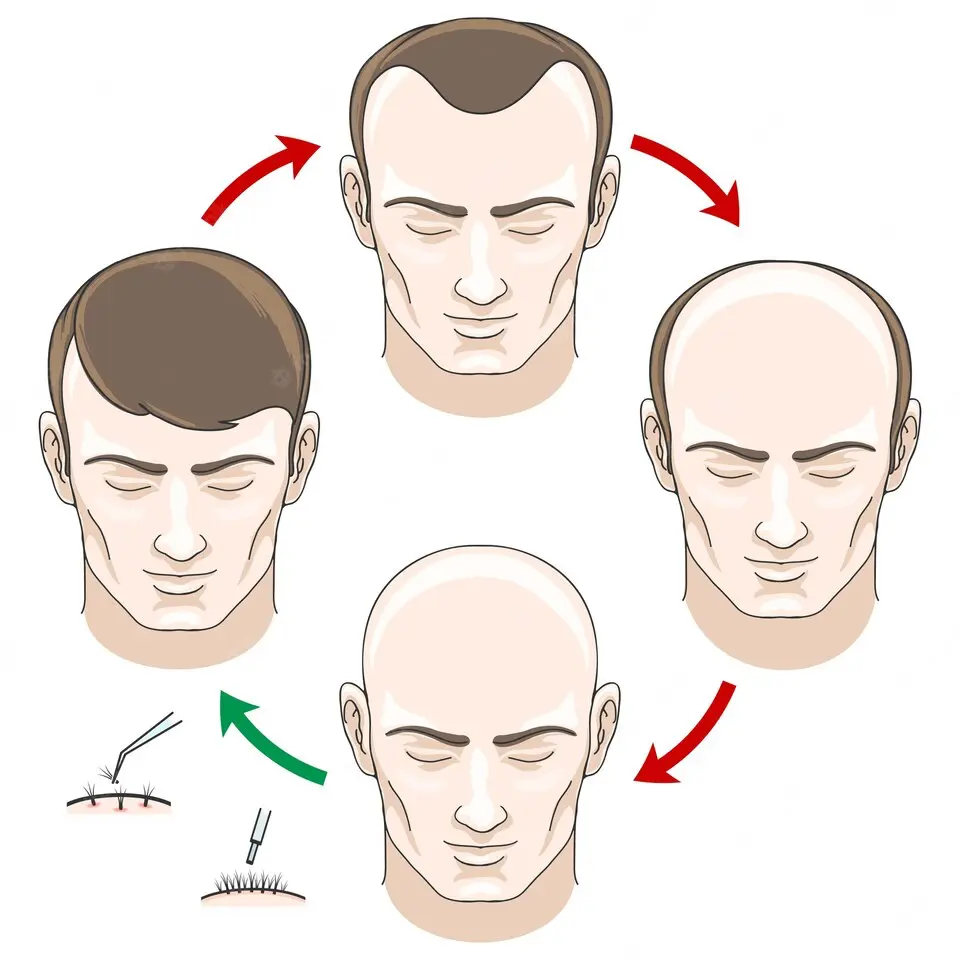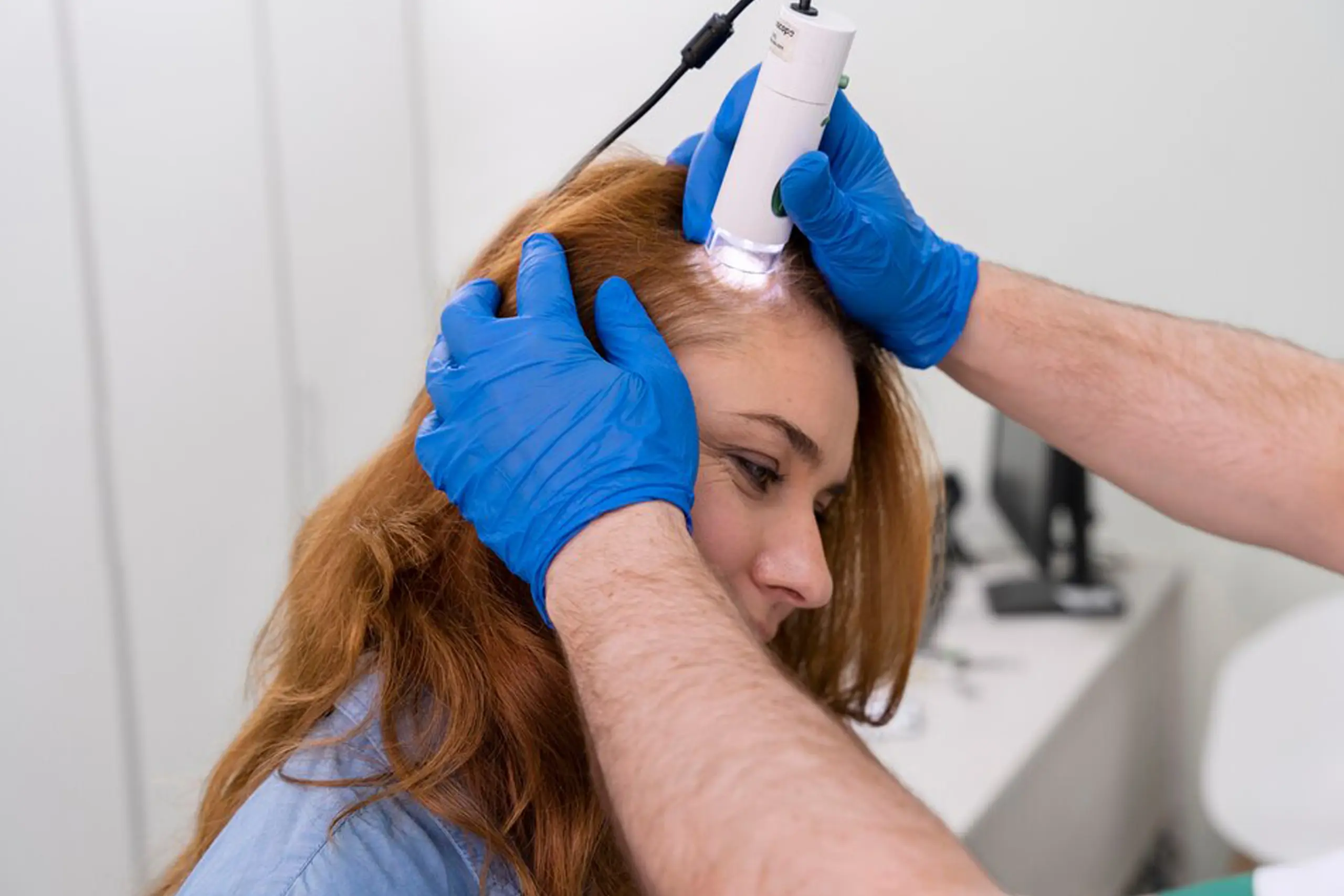Hair Tightening

What is Hair Tightening?
Hair tightening, also known as scalp tightening, is a process that involves hair transplant techniques to improve the overall appearance and firmness of the scalp. This procedure is often sought by individuals who have experienced significant hair loss or thinning and are looking to achieve a more youthful and rejuvenated look.
The hair tightening process typically involves the use one of advanced hair transplant techniques, such as Follicular Unit Extraction (FUE). This technique involve the careful extraction of hair follicles from areas of the scalp with healthy hair growth, often from the back or sides of the head, and their transplantation to areas where the scalp has become loose or saggy due to hair loss.
Hair Tightening Process
Here’s an overview of the hair tightening process by hair transplant:
Consultation: The process begins with a thorough consultation with a qualified hair transplant surgeon. During this consultation, the surgeon will assess the extent of hair loss, evaluate the laxity of the scalp, and discuss the patient’s goals and expectations.
Treatment Plan: Based on the assessment, the surgeon will create a customized treatment plan tailored to the individual’s needs. The plan may involve determining the number of grafts needed and the specific areas of the scalp to target for tightening.
Hair Extraction: In the FUE technique, individual hair follicles are extracted using specialized tools. This process is minimally invasive and leaves tiny puncture wounds that heal quickly without leaving noticeable scars.
Graft Preparation: Extracted hair follicles are carefully prepared under a microscope, ensuring their viability and optimal growth potential.
Transplantation: The prepared hair follicles are then transplanted into the targeted areas of the scalp. The surgeon strategically places the grafts to achieve a natural and balanced hairline while also tightening the surrounding scalp.

Recovery
After the procedure, patients are provided with post-operative care instructions. Recovery time can vary, but most individuals can return to their regular activities within a week or two.
Results: Over the following months, transplanted hair follicles start to grow new hair. As the new hair grows, it contributes to the tightening of the scalp, providing a more youthful and rejuvenated appearance.
Hair tightening through hair transplant not only addresses the appearance of a loose or saggy scalp but also provides the benefits of natural hair growth. The newly transplanted hair blends seamlessly with existing hair, creating a more cohesive and youthful look.
It’s important to note that the success of the hair tightening process depends on factors such as the surgeon’s skill, the quality of the hair follicles, and the patient’s adherence to post-operative care instructions. Consulting with a qualified and experienced hair transplant specialist is crucial to ensure a safe and effective procedure that meets your aesthetic goals.
HAIR Tightening
Before & After
Treatment Stages
Frequently Asked Questions
The hair transplantation procedure generally takes between 6 and 8 hours. During the procedure, patients have breaks for meals, drinking water, or using the restroom.
Patients do not need to stay at the hospital after hair transplantation. They are free to return home right after the procedure.
Staying in Turkey for 3 days is ideal for hair transplantation. The first day involves a physical examination and hair analysis, the second day is for the transplantation procedure, and the third day includes a post-op check-up with the doctor.
There are no limitations to undergoing other aesthetic procedures before or after hair transplantation. However, both the hair transplant doctor and the plastic surgeon should assess the patient separately. Seeking assistance from a patient consultant is recommended for planning both surgeries and avoiding inconvenience.
Patients should refrain from blood-thinning medications (anticoagulants like aspirin, ecoprin, heparin, coumadin, Plavix) for 2-3 days before the procedure. However, all regular medications should continue to be taken as prescribed.
The first hair wash is performed with a special lotion 1-2 days after the procedure. For the first 10 days, washing should be done using a lot of lotion to accelerate healing for scabs.
With techniques like FUE (Follicular Unit Extraction) and DHI (Direct Hair Implantation), patients can generally return to work on the day after the procedure.
Patients can begin exercising after hair transplantation, starting with stretching and basic exercises for the first 3-4 days. For regular sports activities, waiting up to two weeks is recommended.
Hair transplantation should be performed by plastic surgeons or specialized medical staff authorized for this aesthetic procedure.
Hair transplantation is carried out under local anesthesia or sedation for patient comfort. Therefore, the procedure should be conducted in hospitals or sterile clinics.
The hair in the donor area is usually shaved regardless of the technique used. However, shaving the hair in the recipient area depends on the technique.
After hair transplantation, the donor area is covered with a compression dressing, while the recipient area is left open. The dressing should remain for 2-3 days after the procedure.
Wig wearers should stop using them one week before the hair transplant. If hair bonding glue is used on the scalp, it should be thoroughly washed before the procedure. Additionally, any sprays preventing hair loss should be discontinued one week before the operation.
Anyone with a sufficient number of grafts in their donor area can be a candidate for hair transplantation. There are no age, hair quality, or gender restrictions.
Hair transplantation is performed under local anesthesia. If a patient has a systemic disease that could lead to complications after the procedure, the disease should be treated prior to transplantation. Those without enough grafts in the donor area are not recommended for hair transplant. Patients with ongoing scalp diseases should also receive treatment before transplantation.
Transplanted hair from the donor area does not shed as it is insensitive to testosterone. However, hair loss may occur in the upper or side areas of the scalp due to differences in characteristics. Transplanted hair does not shed, but pre-existing hair on the front and sides of the head might.
Shock hair loss, occurring about one month after the procedure, is normal, expected, and temporary.
It’s important to avoid swimming, sauna, heavy sports for six weeks. Refraining from smoking and alcohol aids in faster recovery. Patients can use the shampoo they were using prior to the procedure.
Patient Registration Form
SmyrnaMED
Rediscover Your Beauty...
If you are looking for a reliable, friendly, and people-centered approach in the field of Aesthetic Plastic Surgery, Dental Treatment and Hair Transplantation, you are in the right place. SmyrnaMED is just a phone call away.
